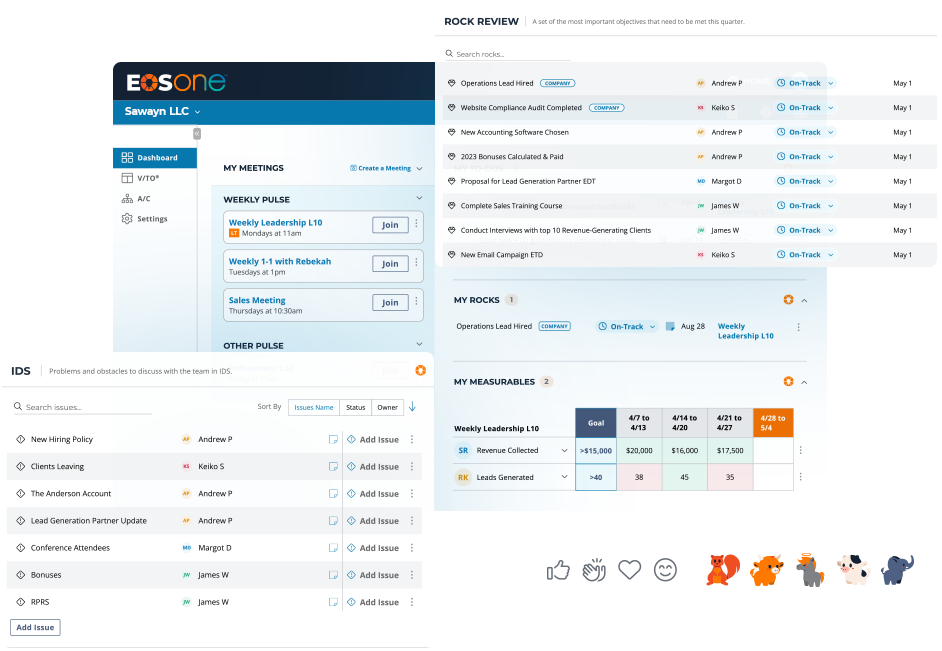 How do you define the SMART acronym? Wikipedia lists several possibilities for defining the acronym. I saw this one 5 years ago: Specific, Measurable, Achievable, Relevant, Time-phased. People often agree on the first three and differ a bit more on “R” and “T.” I like to use Realistic and Timely, but the gist is the same.
How do you define the SMART acronym? Wikipedia lists several possibilities for defining the acronym. I saw this one 5 years ago: Specific, Measurable, Achievable, Relevant, Time-phased. People often agree on the first three and differ a bit more on “R” and “T.” I like to use Realistic and Timely, but the gist is the same.
Use SMART Goals in EOS
EOS is a big fan of SMART goals. We call them Rocks. We set them and review them every 90 days with an objective of achieving our annual goals 90 days at a time. We also check their status weekly. There should be SMART goals for your company, your leadership team and ultimately everyone in your business.
There’s an important difference between SMART goals (and MBOs) and Rocks. Rocks, in the EOS use of the term, are a constrained set of goals. In most small businesses there is never enough time, money and people to do all the things that need to get done, even if they are defined in a SMART manner. So EOS teaches that Rocks are the 3-7 most important goals for the 90-day period immediately in front of you. It is true at the company level, the department level, and the individual level.

EOS also teaches that the achievement of these Rocks is not a contest. It is not pitting one department against another. It is imperative that everyone acts for the greater good of the company. The Company Rocks set by the executive leadership team are the most important goals by definition. Every executive is obliged to not only accomplish the Rocks they own, but to help all of the members of the leadership team accomplish theirs.
How do you set goals for your company and your leadership team?
Next Steps
- Start using Rocks in your company with these great EOS tools.
- Get a free chapter of Traction—the book that introduces Rocks and the EOS system.
- Ready to get started with EOS? Request a 90-Minute Meeting!





